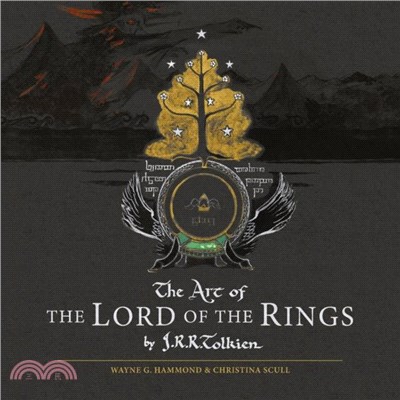Strong to Save: Maritime Mission in Hong Kong from Whampoa
商品資訊
ISBN13:9789629373054
出版社:香港城市大學出版社
作者:Stephen DAVIES
出版日:2017/12/01
裝訂/頁數:平裝/640頁
規格:23cm*15.5cm*3.5cm (高/寬/厚)
商品簡介
This is a history of one of the most enduring institutions of Hong Kong, and the first of its kind. Using the Club’s own records as well as a wide range of sources both from within Hong Kong and from the seafaring world at large, this is a comprehensive account of the life of the Missions, the tenancy of the different chaplains, managers, and stewards, the changes in seafaring practices and shipping, and the transformation of Hong Kong itself.
作者簡介
序
Much has changed in the way we support the pastoral, spiritual, and physical needs of seafarers whose ships call at the terminals and anchorages of Hong Kong harbour. However, I believe we can learn a lot from the history of any organization, in particular how it has responded to the changing patterns of life in Hong Kong both at sea and ashore. What seems to stand out is that on many occasions the Mission was just a bit behind the curve (I will let the reader uncover these facts for themselves without giving away too much of the story) but in spite of this the Mission has continued to survive and to work amongst seafarers today, providing a pastoral and spiritual home away from home in Tsim Sha Tsui and Kwai Chung.
It is however, refreshing to understand that the chaplains and staff of the organization have one thing in common throughout: that is the need to constantly keep up with the changing face of the shipping industry. Changes from sail to steam, from general cargo to container, from mid-stream to terminal have all affected the way in which the Mission has operated. Whether ship visiting by launch or on land, this history shows the remarkable perseverance of Mission chaplains and staff to accommodate whatever was thrown at them. Problems of location (as the Hong Kong shoreline developed), along with limited finances, war, dealings with the Royal Navy, the proximity of the red light district, and pressure from expected and unexpected competition would have been a heavy burden for many of the chaplains. Alongside these challenges were the constant health issues of malaria and a far from fit water supply that caused many a chaplain to exit Hong Kong earlier than expected.
In part, this endurance has only been possible with the help of the many who served on the Mission’s General Council, who as volunteers have given up much time and resources to serve the needs of seafarers who found themselves in Hong Kong. Particular thanks through the course of time must be extended to many of the prominent members of the Hong Kong business community whose donations made the first Sailors Home possible. Standing out above the crowd are Messrs Jardine Matheson who have been connected with the Mission almost from day one and who were instrumental by means of the first significant donation in enabling the construction of the first Sailors Home. Much praise should also go to the many and sometimes extraordinary chaplains who served in Hong Kong, often to the detriment of health and well-being.
One might wonder what the early chaplains who made the long sea journey from the United Kingdom made of the early Mission in Hong Kong. Many of the first Mission chaplains would have come from the Christian Socialist school of thought with a definite temperance background, seeking to save the wayward seafarer from the demon drink, determined to meet him at the place of work and bring some of the good news of the Gospel to his downtrodden and torrid life. In many cases they would have been much more at home with their fellow British seafarers and to a greater extent would have seen their calling to that nationality alone.
For the chaplains arriving before World War II there was of course the unexpected hardship of internment; life under the Japanese brought much pain and suffering both to them and to the people of Hong Kong. In spite of the massive damage done at the time, the Mission survived, probably due to the services not only of the enduring chaplains but also of the loyal local staff who get little mention in dispatches, but to whom much is owed. They were ready and willing to pick up all the broken pieces of the Mission post war and put together a viable working organization that would put right the devastation of the war-damaged Mission.
In the post-war world we see the addition of more international seafarers, in particular large numbers from the Philippines and Asia. Some chaplains struggled with the paradigm shift whilst others sought a remedy by offering succor to this new breed of seafarer. The tensions this brought about we can see clearly displayed in this book.
With the introduction of new patterns in shipping, crew numbers have drastically shrunk and are now approximately half of what they were 30 years ago, vessels are much bigger but turnaround times have been shortened from days to hours. All these changes took place within a relatively short period of time and the modern-day Mission has adapted its work to suit the changing environment. The use of the launch Dayspring remains pivotal in the Mission’s daily routine of ship visiting, whilst a greater presence on board ship has become essential. The challenge for us today is to try to get ahead of the curve and be able to deliver maritime ministry that is relevant and fit for purpose for the next 30–50 years. Towards the end of the book we see the beginnings of details of new plans for the Mission in Tsim Sha Tsui and those plans will hopefully become a reality in the near future.
Today’s seafarer spends little time in port, often without the ability to gain shore leave. Pressures upon them at work and at home give rise to problems of loneliness and isolation. It is still the Mission’s task to bring relief and care to those who we serve, helping them to communicate with loved ones at home or just being someone to listen to problems. Often through the worldwide network of the Mission to Seafarers, which has a presence in over 200 ports and 51 countries, we can help both on board and at home. The Mission in Hong Kong continues to be a human presence for seafarers in an increasingly mechanized working and living environment.
We owe a great debt of gratitude to our predecessors who kept faith when sometimes all seemed lost. Without their stewardship, leadership, and perseverance there would be no Mission today in Hong Kong.
The Reverend Canon Stephen Miller
Senior Chaplain, The Sailors Home and Missions to Seamen,
Hong Kong Regional Director East Asia, The Mission to Seafarers
目次
Part I: Making a Departure
1 From Whampoa to Hong Kong
2 The View from the Harbour Master’s Office
3 A Snug Harbour in West Point
Part II: Church and Mission
4 A Seamen’s Church
5 Uneasy Berth and the Demon Drink
6 Parting Brass Rags
7 Meanwhile Down on the Waterfront
8 Separate Moorings
9 Headwinds and Adverse Currents
10 One Ship, but Still Two Cap Tallies
11 An Interesting Launching on the Wan Chai Waterfront
12 Threatening Times
Part III: War and Recovery
13 Destruction and Occupation
14 Recovery and the Dawning of a New World
Part IV: Adapting to a New World
15 The New World Dawns
16 Cross-Currents
17 Sea Changes
18 Passage Planning Part V: Definitive Moves
19 The Mariners’ Club: Laying the Foundations
20 Who is Captain?
21 The Mariners’ Club: Ironing Out the Wrinkles
22 Many Shepherds, One Flock
23 On Course for the Future Epilogue
書摘/試閱
Part I Making a Departure
1 From Whampoa to Hong Kong
T he story of caring for the social and spiritual welfare of western sailors, whose ships were temporarily in the Pearl River Delta waters that include Hong Kong, formally begins in either November or December 1822. Robert Morrison’s own version, written quite close to the actual occasion, reads:
On Sunday, 10 November 1822, a Bethel flag, prepared by Mr Oliphant [sic], a pious American Gentleman of the Presbyterian Church at New York, was hoisted at Whampoa, at the mast-head of the ship Pacific, of Philadelphia, belonging to Mr Ralston, a veteran foreign Director of the London Missionary Society.
A later version by Mrs Eliza Morrison written in around 1839, transcribing a letter from the good reverend two days after the above event and probably resulting in a copyist’s or typesetter’s muddle, places the event almost a month later on 8 December 1822.
Just to muddy the waters comprehensively, in the first issue of the Sailor’s Magazine published by the newly founded American Seamen’s Friend Society in 1829, a letter from Robert Morrison states that the Bethel flag was hoisted in the year 1826.4 Although it has been the later, 1826, date that has come down to us, the earlier, probably November, date is correct for the commencement of a mission to seafarers in the Pearl River Delta.
But however we date that first raising of the Bethel flag in our waters, that Robert Morrison was the prime mover of mission work amongst seafarers in China is attested by the American Seamen’s Friend Society’s recollection in 1908 of the first 80 years’ of its mission. No doubt sailors had been reached out to before Robert Morrison first helped raise the Bethel flag, but no institutions existed that ensured their social and spiritual needs were cared for.
Western sailors were not in general allowed to go ashore in Canton, which meant that they could not attend the church services in the foreign factories. Runs ashore for recreation were strictly limited to once in the two or three months ships spent discharging and loading, and their results were often anarchic; drunkenness on samshoo featuring large. Medical care was entirely dependent on whether a sick seaman’s ship had an embarked doctor or if not, whether he had access to a ship that did have one. And for social and spiritual care, for the most part they had to shift for themselves. As Morrison put the matter in his brief “Proposal” of 1826,
The assistance that sailors in China require, is medical attendance for many of them; and for all of them instruction concerning their duties as moral and religious beings.
To meet those needs, after he got back to Britain in 1824, Morrison put together a book, A Parting Memorial Consisting of Miscellaneous Discourses Written and Preached in China; at Singapore; on Board Ship at Sea, in the Indian Ocean; at the Cape of Good Hope; and in England that was published two years later. In one of its articles he proposed a floating seaman’s hospital and a floating seaman’s church, explicitly linking them to the provision of similar facilities that were being planned in London.8 Robert Morrison’s “Proposal” can therefore quite reasonably be called the foundation document of a mission to seafarers in the Pearl River Delta area. It accordingly becomes by extension the founding document of the mission in Hong Kong, since all that it commends was in time instituted.
主題書展
更多書展今日66折
您曾經瀏覽過的商品
購物須知
為了保護您的權益,「三民網路書店」提供會員七日商品鑑賞期(收到商品為起始日)。
若要辦理退貨,請在商品鑑賞期內寄回,且商品必須是全新狀態與完整包裝(商品、附件、發票、隨貨贈品等)否則恕不接受退貨。
























